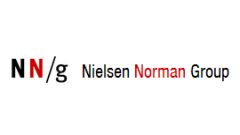New eyetracking research from the Nielsen Norman Group finds that despite the pervasiveness of long pages in contemporary website designs, users still spend more than half their time viewing content in the first screen that loads - or "above the fold" in newspaper terminology.
As recently as 2010, users spent 80% of their viewing time above the fold. NNGroup set about updating that research, on the theory that today's larger screens and longer pages might have changed user behavior.
The 2018 experimental design involved 120 participants who viewed a variety of material on a 1920x1080 screen.
Looking at 1080 px vertical segments of pages:
- Users spent 57% of viewing time above the fold (0 to 1080 px down)
- Users exhibited a sharp decrease in attention below the fold, spending 17% of viewing time in the second screen (1080 to 2160 px), 7% in the 3rd screen, 5% in the 4th screen, 3% in the 5th screen, 2% in the 6th screen, and 1% max in each following screen.
To try to take the variable of page length out of the equation, the researchers then looked at viewing time by 20% segments of pages (fifths of the page).
- On general websites, 42% of viewing time was spent in the top 20% of pages.
- On SERPs (search engine return pages), 47% of time was spent in the top 20%.
Looking at where viewing time was spent within the first 1080 px screen:
- 65% of viewing time of general web pages was spent in the top half of the screen (0 to 540 px down).
- 75% of viewing time of SERPs was spent in the top half of the screen.
(The researchers concluded from this that if you're not #1 or #2 on Google, you hardly exist on the Internet.)
Recommendations the researchers have drawn from their findings:
- Reserve the top of the page for key business and user goals, key calls to action.
- Style text (headers, bold text) to draw attention to important content.
- Avoid the "illusion of completeness" at the end of the first screen - don't let content appear to finish there. (This is the same idea as ending pages of a sales letter in the middle of a sentence, to get people to turn the page.)
- Test your design with audience-surrogate users to determine optimal page length that lets users find the content they're looking for.
The issue of hardly existing on the Internet if you're not #1 or #2 on Google is a hard nut to crack with today's ever-improving semantic search algorithms. Because it's about equally true that no website is #1 or #2 on any given search query for more than a (usually small) subset of Google users. So work on providing content that will help solve the problems of people in your (well-defined) target subset, and if you do a good job of that, high Google ranking should follow.

 - David
- David
Comments on Longer pages notwithstanding website users still spend most viewing time above the fold